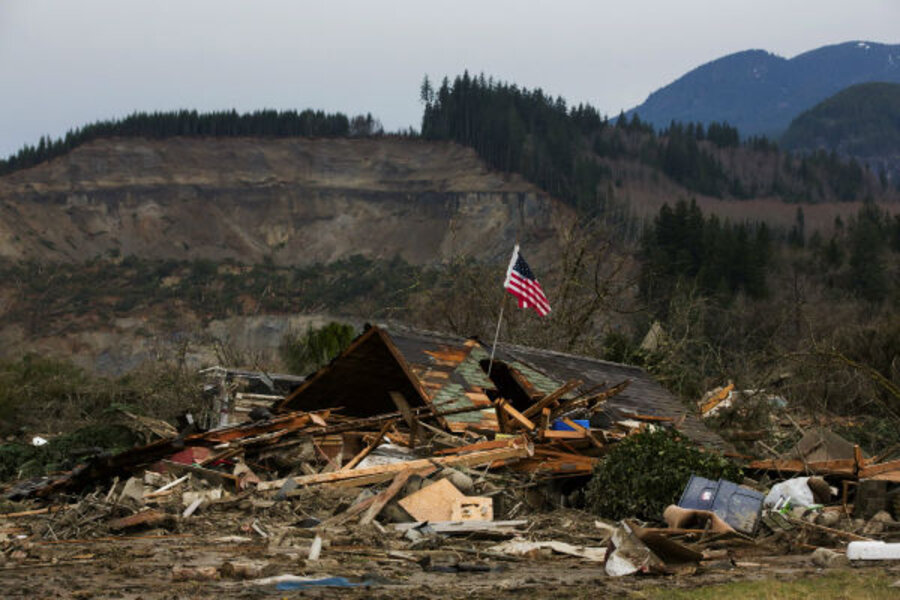Washington mudslide: Reports warned of hillside's 'catastrophic failure'
Loading...
In the wake of the devastating mudslide that has claimed at least 16 lives and destroyed 30 homes in Washington's Snohomish County, questions have emerged about whether people should have been living in the shadow of a hillside known to be prone to slides.
Numerous reports dating back to the 1950s have warned that the hillside that collapsed on Saturday is subject to failure, The Seattle Times reported. Indeed, the very same portion of hillside outside Oso, Wash., has slid into the Stillaguamish River numerous times since the 1950s.
Most recently, a slide in January 2006 plugged the north fork of the river and carved a new channel that threatened homes. When geomorphologist Daniel Miller visited the area a few weeks later, he expected to see vacated homes, but instead found carpenters building new ones.
“Frankly, I was shocked that the county permitted any building across from the river,” he told the Times. “We’ve known that [the hill has] been failing…. It’s not unknown that this hazard exists."
Mr. Miller has studied the area since the 1990s. His 1999 report for the US Army Corps of Engineers warned of “large catastrophic failure.”
"I knew it would fail catastrophically in a large-magnitude event," though not when it would happen, Miller told the Associated Press. "I was not surprised."
Another US Army Corps of Engineers report, released a year later, echoed Miller’s warning, The Daily Herald of Everett (Wash.) reported.
Snohomish County Emergency Department director John Pennington told the Associated Press that homeowners “were very aware of the slide potential.”
However, when questioned about the history of slides during a press briefing on Monday, he said the area had been “considered very safe.”
Several strategies exist for fortifying slopes that are prone to landslides, including rebuilding the hillside, adding drainage systems to prevent saturation, and building up the toe of the previous slide to curb erosion.
But prevention is difficult in places such as the Stillaguamish area, where landslides have scalloped much of the valley, Jim O'Connor, a research hydrologist with the US Geological Survey, told National Geographic.
“This isn’t a situation where [the authorities] should have done something [to prevent it] because there is so much terrain there that this could have happened to,” he said.
Landslides occur regularly all over the United States, but they make news only when homes are in their paths, USGS researcher Jonathan Godt told AP.
The western foothills of the North Cascades are particularly prone to large and sudden landslides, according to a USGS statement issued Monday.
A 1951 engineering assessment of the hillside that has repeatedly slumped into the Stillaguamish River concluded that the river continually erodes the “toe” of previous slides until the toe gives way and the mountain comes down once again, according to The Seattle Times.
Saturday’s slide was likely triggered by extensive rainfall in previous weeks, which saturated the hillside down to the water table, the Monitor reported Tuesday.
Researchers have warned that advancing climate change will likely increase the number of intensified rain events, which could increase landslide hazards.
In Oso, residents and rescue teams are focused on the desperate search for the 176 people reported missing. As search and rescue efforts give way to recovery, they will be faced with the difficult decision of whether to build again or to move elsewhere to more stable ground.
Material from the Associated Press was used in this report.








